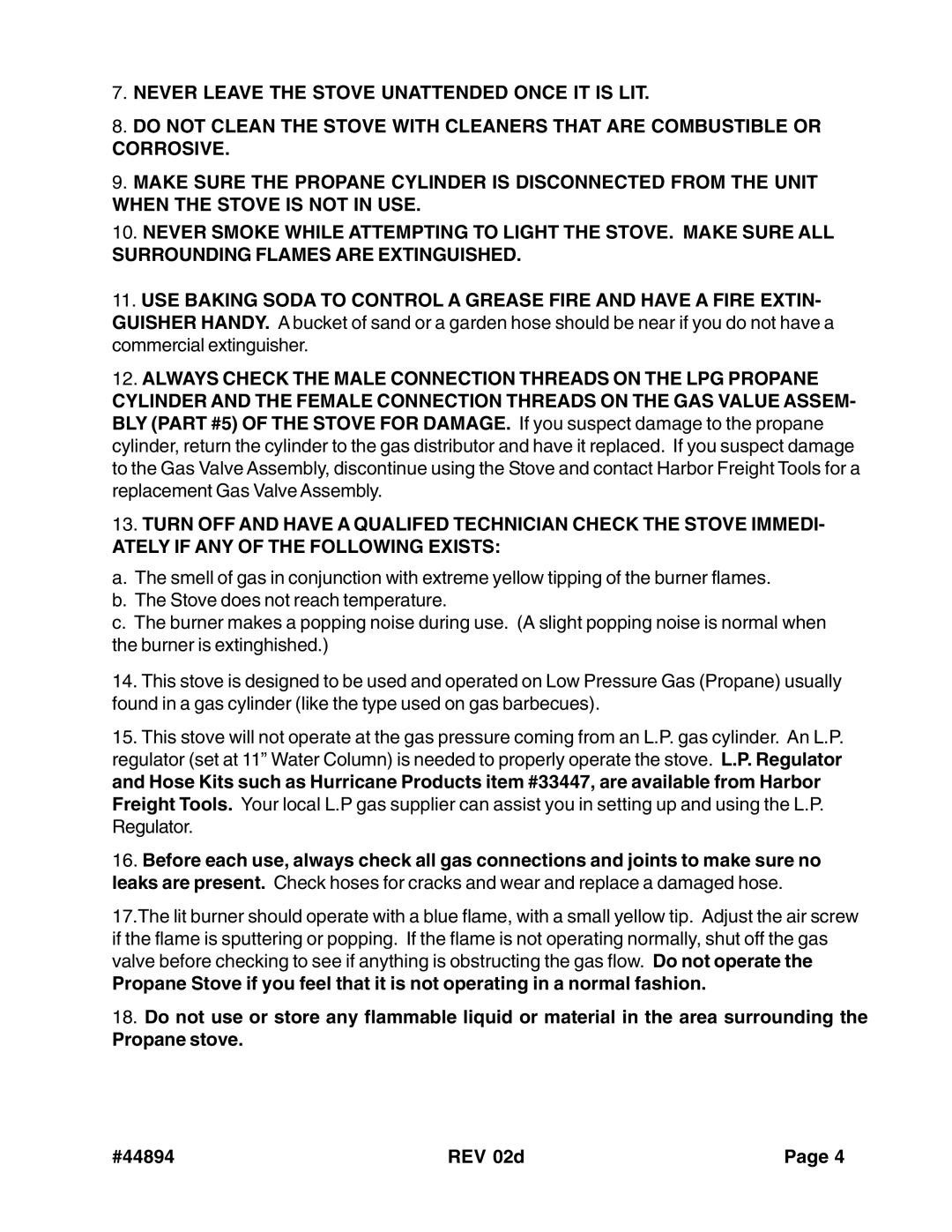44894 specifications
The Harbor Freight Tools 44894 is a versatile and innovative addition to any workshop. Known for its reliability and performance, this product combines practicality with advanced features, making it a go-to tool for professionals and DIY enthusiasts alike.At its core, the Harbor Freight Tools 44894 is designed for tasks that require precision and durability. One of its standout characteristics is its robust construction, often made from high-grade materials to withstand everyday wear and tear. The tool is ergonomically designed, ensuring a comfortable grip during prolonged usage, which significantly reduces hand fatigue and enhances overall productivity.
One of the main features of the Harbor Freight Tools 44894 is its impressive power output. This tool is equipped with a high-performance motor that delivers superior torque, making it suitable for a variety of applications, from drilling to fastening. Whether you're working with wood, metal, or plastic, this tool adapts seamlessly to different materials, ensuring clean and efficient results.
Furthermore, the Harbor Freight Tools 44894 boasts advanced technology that enhances its functionality. Many models come with variable speed settings, allowing users to adjust the speed based on the specific task at hand. This feature provides greater control and precision, making it easier to achieve the desired results without damaging the material.
Another noteworthy characteristic is the inclusion of safety features. The Harbor Freight Tools 44894 is equipped with safety guards and overload protection mechanisms, which prevent accidents and prolong the life of the tool. This commitment to safety makes it an ideal choice for both novice and experienced users.
Portability is also a key aspect of the Harbor Freight Tools 44894. Lightweight and compact, this tool is easy to transport, making it ideal for on-the-go projects. Whether you’re heading to a job site or tackling a project at home, the convenience of being able to move the tool easily cannot be overstated.
In summary, the Harbor Freight Tools 44894 stands out in the market for its combination of power, precision, and user-friendly design. With its durable construction, advanced features, and focus on safety, it is an indispensable tool for anyone looking to enhance their craftsmanship. Whether you are an amateur DIYer or a seasoned professional, the Harbor Freight Tools 44894 is an investment that pays off in terms of efficiency and reliability.
